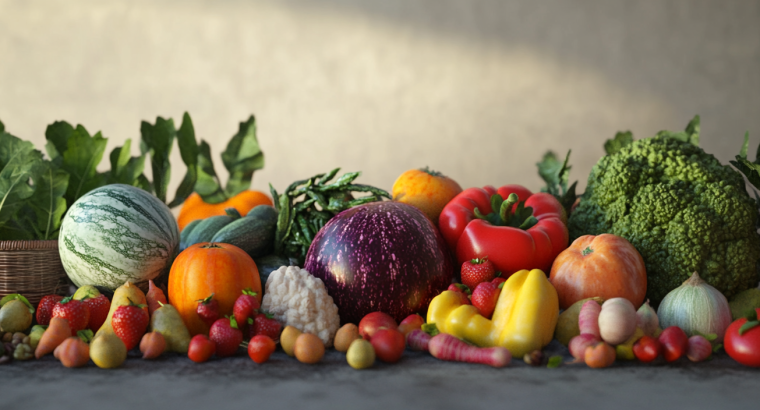Seasonal Fruits and Vegetables for Diabetes Control
Managing diabetes requires a careful balance of diet, exercise, and medications. A crucial component in this is the intake of fruits and vegetables. They are packed with necessary vitamins, minerals, and fibers that can significantly influence blood sugar levels. Choosing seasonal fruits and vegetables not only ensures you are eating them at the peak of their nutrient content but also supports local agriculture and is generally more cost-effective. This article will explore various seasonal fruits and vegetables that are particularly beneficial for diabetes control.
Understanding Diabetes and the Glycemic Index
Before diving into specific fruits and vegetables, it’s essential to understand how diabetes affects your body. Diabetes is a chronic condition where your body either doesn’t produce enough insulin (Type 1 Diabetes) or can’t use its insulin effectively (Type 2 Diabetes), leading to high blood sugar levels.
A helpful tool for managing diabetes is the Glycemic Index (GI), which measures how quickly foods cause blood sugar levels to rise. Foods with a low GI are absorbed more slowly and generally cause a steady rise in blood sugar levels, making them a smarter choice for individuals with diabetes.
Benefits of Eating Seasonal Produce
Choosing seasonal fruits and vegetables isn’t just a culinary trend; it comes with real perks:
- Nutrient Density: Seasonal produce is often richer in nutrients since it’s harvested at the right time.
- Taste and Freshness: They tend to taste better and are fresher compared to out-of-season produce, which might have been transported over long distances.
- Economic and Environmental Benefits: Buying local seasonal produce supports farmers in your area and typically results in a lower carbon footprint.
- Cost Efficiency: Seasonal produce is usually more abundant, reducing costs for consumers.
Seasonal Fruits and Vegetables for Diabetes Control
Autumn
Fruits:
- Apples: With a moderate GI, apples are a great addition to a diabetes-friendly diet. They are high in fiber and vitamin C, which can help regulate blood sugar and boost the immune system.
- Pears: Pears are an excellent source of fiber and vitamin K. Their low GI makes them a smart choice for keeping blood sugar levels steady.
- Grapes: While slightly higher in sugar compared to other fruits, grapes contain beneficial phytonutrients. Moderation is key.
Vegetables:
- Pumpkins: Pumpkin contains carotenoids and is low in calories. It can be used in soups and stews to create filling meals without spiking blood glucose.
- Brussels Sprouts: Loaded with fiber and vitamin K, Brussels sprouts are perfect for keeping blood sugar in check.
Winter
Fruits:
- Oranges: Oranges are high in vitamin C and have a moderate GI. A whole orange is a better choice than orange juice, which lacks fiber.
- Pomegranates: These are rich in antioxidants, particularly polyphenols, which have been linked to improvements in glycemic control.
Vegetables:
- Kale: Known as a superfood, kale is packed with vitamins A, C, and K. It’s low in carbs and high in fiber, making it an excellent choice for those monitoring their blood sugar.
- Turnips: Low in calories and high in vitamin C, turnips are a perfect addition to a diabetic diet. Their fibers can help in stabilizing blood sugar levels.
Spring
Fruits:
- Strawberries: These berries are not only delicious but also packed with antioxidants and fiber. Their low GI makes them perfect for maintaining steady blood glucose levels.
- Cherries: Cherries have anti-inflammatory properties and their low GI can positively impact diabetic health.
Vegetables:
- Spinach: High in fiber and with a very low GI, spinach is an excellent spring vegetable for managing blood sugar.
- Asparagus: Rich in glutathione, known for its anti-aging properties, asparagus also contains Vitamin B6 which aids in glucose control.
Summer
Fruits:
- Watermelon: Though high in GI, watermelon can be consumed in moderation, given its low-carbohydrate content. It is hydrating and contains lycopene, beneficial for heart health.
- Peaches: Peaches are rich in vitamins A and C and have a low GI, making them a great summer treat.
Vegetables:
- Zucchini: Zucchini is versatile and contains pectin, a type of soluble fiber that can be beneficial for controlling blood sugar.
- Bell Peppers: These are rich in vitamins A and C. They add flavor while keeping meals low-calorie and diabetes-friendly.
Tips for Incorporating Seasonal Produce into Your Diet
- Plan Weekly Meals: Use seasonal produce as the centerpiece of your meal planning. Websites and cookbooks dedicated to diabetes-friendly recipes can provide inspiration.
- Experiment with Salads: Make colorful salads featuring a combination of fresh fruits and vegetables. Adding a protein like grilled chicken can make them a complete meal.
- Smoothies: Blend your favorite low-GI fruits and leafy greens to create nutrient-packed smoothies. Use almond milk or Greek yogurt for a protein boost.
- Soups and Stews: Take advantage of root vegetables and squashes during the colder months to create hearty, satisfying soups.
- Snacking: Keep fresh cut fruits and steamed vegetables like carrots and peppers ready for easy, healthy snacks.
Conclusion
Embracing a diet rich in seasonal fruits and vegetables is a sustainable way to control blood sugar levels and manage diabetes effectively. These foods are nutrient-dense, full of flavor, and can be easily integrated into a variety of dishes. Remember, while incorporating these fruits and vegetables can be beneficial, it is crucial to maintain balance with other food groups and adhere to a personalized treatment plan recommended by healthcare providers. By making informed and mindful choices, people with diabetes can enjoy a varied diet without compromising their health.

